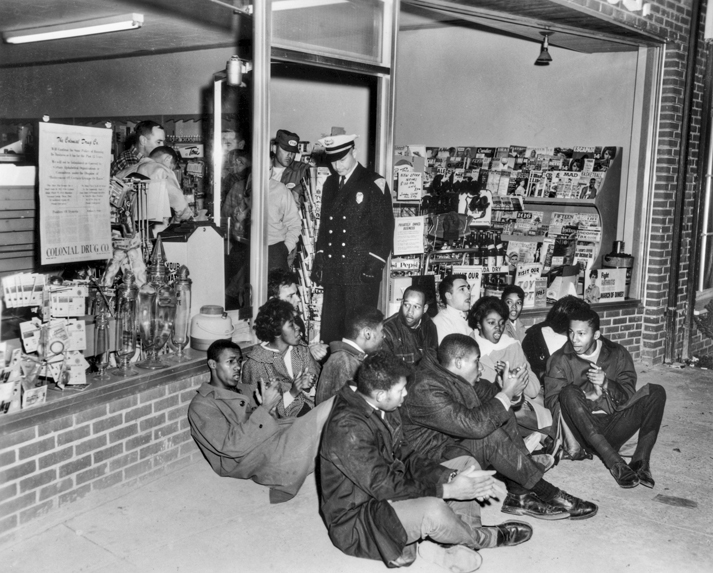How Nonviolent Resistance Works:
Protesting, civil Resistance, and Beating Authoritarianism
Protesting helps, but it doesn’t go all the way.
Protesting is often the first step in a movement, and an important one at that. It brings people together, strengthens networks, and builds momentum. But protest alone does not tend to bring deep, lasting change.
To bring about that kind of change in a non-violent way, the most effective way that we know of is civil resistance.
What is Civil Resistance?
Civil resistance is the use of strategic, nonviolent action to challenge and dismantle oppressive systems by targeting the structures that sustain them.
This approach relies on a powerful idea: No government can function without the support of certain key groups and institutions. If these groups - whether civilians, workers, security forces, or media - begin to defect or disengage, the regime’s grip begins to loosen.
Civil resistance is not passive.
It is an active and often courageous form of struggle.
It includes a wide range of tactics, including boycotts, strikes, sit-ins, and building alternative institutions, that threaten the legitimacy of a regime by refusing to cooperate with it. It requires consistent, long-term dedication from the resistors.

How does Civil Resistance Work?
The Pillars of Power
Civil resistance works by chipping away at the Pillars of Power of a regime. Each “pillar” refers to an institution that the regime depends on to maintain authority. These typically include:
The Military
The Police
Civil Service and Beauaucracy
The Judiciary
The Media
Business and Economic Elites
Religious Institutions
Educational Systems
The General Population
Civil resistance movements work by identifying which pillars are most vulnerable to pressure, persuasion, or disobedience, and then organizing targeted actions to erode their support of the regime.
Some of these actions may include:
Withdrawing public support, as in the case of a boycott.
Disruption, such as strikes, slowdowns, supporting disruptors, and other methods of “gumming up the works” or kneecapping the means of control.
Influencing actors within the system. While this is challenging, winning over segments of actors within the system - or at least encouraging their neutrality - can be decisive. For example, National Guard troops may honor their oath and refuse to act against non-violent protestors.
Creating alternative structures. If resistors form networks to provide services for each other outside of the regime’s structures, this reduces their reliance on those traditional structures, and gives them less power. Mutual-aid volunteer work is a typical way of creating and strengthening these sorts of alternatives.
How effective is civil resistance?
Very.
According to world-renowned activism scholar Erica Chenoweth, it works remarkably well. In their book Civil Resistance: What Everyone Needs to Know, Chenoweth studied 627 revolutionary campaigns around the world, both violent and nonviolent, from 1900 through 2019. Of these, over 50% of the nonviolent revolutions succeeded in their goals, while only 26% of the violent ones were successful.
Chenoweth, Erica. Civil Resistance: What Everyone Needs to Know. Oxford University Press, 2021.
These nonviolent movements have generally used civil resistance as their primary means of affecting change.
Why is it effective?
Civil resistance is effective against authoritarian regimes because it is harder to quash than violence. Authoritarians are prepared for violence; they often welcome it as an excuse to crack down and use force.
What they fear more is mass noncooperation because it’s harder to repress, it exposes their weaknesses, and it calls their legitimacy into question, both at home and abroad.
Civil resistance is not just a moral alternative to violence - it is often the most practical and effective means of challenging power.
Learn More
For more information on civil resistance, historical examples, and how it works, we highly recommend reading Civil Resistance: What Everyone Needs to Know by Erica Chenoweth, Ph.D. (which builds on their similar work with Maria J. Stephan, Ph.D.: Why Civil Resistance Works, published 2011). If you are pressed for time, the first chapter alone is informative and inspiring.
You can buy it at the publisher’s website (Oxford University Press, in paperback, e-book, or audiobook format), or by request it at your local library or independent bookstore. You can also listen to it on Spotify.
Amazing! We can do this!
Where do I start?
You can start helping with real, achievable civil resistance now by checking out our What You Can Do page.
Here we keep an updated list of actions you can help accomplish!





